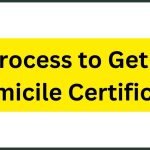SSC CGL Syllabus 2023: The Staff Selection Commission released the notification for CGL on its website along with the tentative dates of examination. So aspirants who will submit their application must start their preparation and if they are serious and wanted to qualify for the post they have applied for, then they “should not leave any stone unturned” and for that, they must go through the CGL 2023 syllabus and its exam pattern which we have discussed below.

SSC CGL Syllabus 2023
As you go through the CGL 2023 notification, you may know that the posts’ selection process will go through 4 Tiers and to qualify for the post, you need to cross these 4 barriers. Have a look at the mode and type of tiers which is given as: –
| Tier | Exam mode | Exam Type |
| Tier I | Computer Based Examination | Objective |
| Tier II | Computer Based Examination | Objective |
| Tier III | Pen and Paper Mode | Descriptive |
| Tier IV | Computer Proficiency Test (CPT)/ Skill Test (whichever applicable as per the posts applied for) | As applicable |
SSC CGL Exam Pattern
If Computer Based Examination is conducted in multiple shifts then the score of the candidates will be normalized and such normalized score will be used by the commission to determine a candidate’s final merit and cut-off marks.
There are no such criteria for Re-evaluation or Scrutiny of scores.
SSC CGL Tier I Exam Scheme
- Question type: Objective type
- Language: English and Hindi (Except English section)
- Negative Marking: 1/2 for each wrong answer
- Duration of Exam: 60 minutes (20 minutes extra for those who using scribe)
| Subject | No. of Questions | Max. Marks |
| General Intelligence & Reasoning | 25 | 50 |
| General Awareness | 25 | 50 |
| Numerical Aptitude | 25 | 50 |
| English Comprehension | 25 | 50 |
SSC CGL Tier I Exam Syllabus
Have a look at the topic which will be covered in the Tier-I examination.
| General Intelligence & Reasoning | Analogy, Space visualization, Similarities and Differences, Analysis, Problem Solving, Blood Relation, Discrimination, Observation, Visual memory, Arithmetic Reasoning, Figure classification, Number series, Non-verbal series, Coding & Decoding, Statement, Syllogism, Analogy (symbol, number, and figure based), Word Building, Coding & de-coding, Numerical Operation, Venn diagrams, Punched hole pattern, figure folding pattern, Indexing, Number coding, Emotional and social intelligence. |
| General Awareness | Through this subject candidates, GA will be tested which will be based on Current Events, History, Culture, Geography, Economic scene, General Policy & Scientific Research. |
| Numerical Aptitude | Percentage, Ratio & Proportion, Square Roots, Profit Loss and Discount, Partnership, Mixture and Allegation, Time, work, and distance, Algebra (basic), Linear Equations, Triangle and various kinds of centres, Circle, Tangents, Angles, Quadrilateral, Regular Polygons, Right prism, circle, Sphere, Cylinder, Hemisphere, Regular height pyramid, Trigonometric ratio, Degree and radian, Histogram, Bar diagram, and Pie chart. |
| English Comprehension | Comprehension, Cloze test, Fillers, One Word Substitution, Synonyms, Antonym, Sentence Correction, Idioms and Phrases, Spotting error, |
SSC CGL Tier-II Exam Scheme
- Question Type: Objective
- Negative Marking: 1/4th in Paper-II and 1/2 in Paper-I, Paper-III, and Paper-IV
- Duration of Exam: 2 hours (40 minutes extra for those using scribe)
| Subject | No. of Questions | Max. Marks |
| Paper I: Quantitative abilities | 100 | 200 |
| Paper-II: English Comprehension and Language | 200 | 200 |
| Paper III: Statistics | 100 | 200 |
| Paper IV: General Studies (Finance & Economics) | 100 | 200 |
Note 1: Paper I and Paper II are compulsory for all posts.
Note 2: Paper III will be only for those candidates who had applied for Junior Statistical Officer (JSO) whereas Paper IV for those who have applied for Assistant Audit Officer/ Assistant Accounts Officer.
Note 3: Paper I will be of Matriculation, Paper-II of Intermediate, Paper-III & IV will be of Graduation Level.
SSC CGL Tier-II Syllabus
Paper I (Quantitative Abilities) | Ratio & Proportion, Profit and Loss, Percentage, Square roots, Averages, Interest, Discount, Mixture and Allegation, Time, Distance, and work, Algebra and Elementary surds, Circle, Right Prism, Right circular cone, sphere, Hemisphere, Rectangular Parallelepiped, Regular right pyramid, trigonometric ration, Standard identities, Height and distance, Histogram, Bar diagram & Pie chart, Circle and its chords, Tangents, angles subtended by chords of a circle. |
Paper-II (English language and comprehension) | Error spotting, fill in the blanks, Antonyms/Synonyms, Misspelled words, idioms & phrases, One Word Substitution, Sentence improvement, Active and passive voice, Conversion into direct and indirect narration, Sentence shuffling, Passage shuffling, Cloze passage, and Comprehension passage. |
Paper III (Statistics) | Collection, Classification, & Presentation of statistical data Measurement of central tendency, depression, Moments, skewness, and kurtosis Correlation and regression Probability theory Random variable and probability distributions Statistical theory Statistical inference Analysis of variance Time series analysis Index numbers |
Paper IV (General Studies, Finance, and Economics) | A) Finance and Accounts: – Fundamental Principles and basic concept of Accounting 1) Financial Accounting: – Nature and scopes, Basic Concepts & Conventions, Generally accepted accounting principles, Limitations of financial accounting. 2) Basic Concepts of accounting: – Single and double entry, Journal, Original book entry, Bank Reconciliation, Error Rectification, Trading, Manufacturing, Profit and loss appropriation accounts, Depreciation, Balance sheet distinction b/w capital & revenue, Non-profit Organisation accounts, Expenditure Accounts, Bills of exchange, Receipts and Payments and Income & Expenditure accounts. B) Economics and Governance 1) Comptroller & Auditor General of India: – Constitutional Provisions, Role, and Responsibility. 2) Finance Commission: Role and functions 3) Introduction to micro and basic concepts of Economics: About, Scope and Nature of Economics, Methods of Economic Study & Economy Central Problem, Production Possibilities curve. 4) Theory of Demand & Supply: The law of Demand & Elasticity of Demand, Price, Income & cross elasticity, Meaning & Determinants of demand, Law of supply & Elasticity of supply, Theory of consumers behavior Marshallian approach & Indifference curve approach 5) Theory of production and cost: Meaning & factors of production, laws of production- law of variable proportions, and laws of returns to scale. 6) Forms of markets and prices determination in different: Various forms of markets perfect competition, monopoly, oligopoly & Price determination, and monopolistic competition in these markets. 7) Indian Economy: a) Indian Economy Nature and role of different sectors, agriculture role, Problem and growth of industry and services. b) The national income of India and its concepts, and methods to measure national income. c) Population– Size, rate of growth, and Implication on Economic growth. d) Poverty & Unemployment– Relative and Absolute types of poverty, its causes, and the incidence of unemployment. e) Infrastructure– Energy, Transportation, Communication. C) Economics Reforms in India: a) Privatization, Globalization & Disinvestment, Economics Reforms since 1991 D) Money & Banking: a) Monetary/Fiscal Policy: RBI role and its functions, commercial banks/RRB/Payments banks function. b) Balance of payment, budget, and fiscal deficits. c) Budget management act 2003, fiscal responsibility. E) Role of Information Technology in governance
|
SSC CGL Tier III Exam Scheme
Duration: 1 hour
| Exam Mode | Exam Scheme | Max. Marks |
| Pen & Paper Mode | Descriptive paper (English/Hindi) Note: In this applicant needs to write an Essay, Letter, Application, etc.) | 100 |
Candidate can write their Tier III Exam either in Hindi or English language but if it was found that part paper was written in Hindi and part in English then such candidates will be awarded zero marks.
SSC CGL Tier IV Exam Scheme
CGL Tier IV will be of Computer Proficiency Test (CPT) and Data Entry Speed Test (DEST) as per the posts applied by the candidates.
CGL Skill Test Syllabus
Data Entry Speed Test (DEST)
- The applicant applied for tax assistant (Central Excise and Income tax) their typing speed must be 8,000 key depression per hour.
- And for this, a passage test will be conducted which will be 2000 words, and the duration for the same is 15 minutes.
- This test will be of qualifying in nature.
- Such skill test will be conducted at commission regional office and the computer for the same will be provided by the commission.
Computer Proficiency Test
Under CPT candidates will be tested in three modules which are:
| Word Processing | In this, a passage test will be conducted 2000 key depression. |
| Spread Sheet | In this applicant need to prepare a spreadsheet as per the exercise given |
| Generation of Slides | In this applicant need to prepare a presentation in PowerPoint as per the exercise given. |
- CPT is qualifying in nature and applicants need to qualify in each of the given modules.
- The duration of each module is 15 minutes and will be conducted on the trot.
FAQs – Related to SSC CGL 2023
4 Tiers.
No, only Tier I and Tier II will be of objective type while Tier III will be subjective type and Tier IV is a skill test.
Tier I exam was divided into 4 sections Mathematics, Reasoning, English, and General Awareness.
Candidates can check CGL indicative syllabus from SSC official website or from our page.
!!! All The Best Aspirants !!!
Aspirants if you have any query regarding the SSC CGL Syllabus or its exam pattern, then drop the same in the comment box given below.”






